Introduction to Pediatric Acne and Its Epidemiology
Acne is widely recognized as a typical skin condition affecting adolescents, but its occurrence in children is often under-discussed. Pediatric acne, including prepubertal and adolescent acne, presents distinct epidemiological patterns and age-related characteristics. This narrative explores comprehensive data on prevalence, age distribution, and demographic factors influencing acne among children. We delve into research findings to elucidate the onset age, severity trends, familial influences, and treatment considerations, providing readers with a clear snapshot of acne’s impact during childhood and early adolescence.
Prevalence of Acne in Children and Teenagers: A Widespread Skin Condition
Acne is one of the most common skin conditions affecting children and teenagers around the world. Studies show that between 75% and 90% of adolescents will experience some form of acne at some stage during their teen years, making it an almost ubiquitous issue in this age group.
The age distribution reveals that acne typically begins around age 10 to 12, with a higher incidence among females starting at age 10 and in males around age 12. Notably, the prevalence peaks in late adolescence, particularly around 14 to 16 years, with some data indicating that about 72.3% of adolescents in certain populations have acne. Severe acne, although less common, affects roughly 14% of teens, often resulting in more significant social and psychological impacts.
Prepubertal acne, however, presents more rarely. It was identified in only 3.5% of a clinical sample of children aged 7 to 12 years, with a higher prevalence in girls (75%). This early form of acne frequently manifests on the face and involves inflammatory lesions, which are present in over 95% of cases.
Acne tends to be more than a simple skin issue; it can deeply affect emotional well-being. In fact, studies suggest that nearly 29% of children with acne report impacts on their quality of life, with severity correlating to psychological distress.
In summary, acne is a widespread condition among youth, with its prevalence increasing during adolescence and affecting both genders, although slightly more common in females during prepubertal years. Its occurrence, severity, and persistence can vary based on age, gender, and lifestyle factors, highlighting the importance of early recognition and effective management to reduce long-term physical and emotional consequences.
Age of Onset for Acne in Children: Early Signs and Typical Patterns
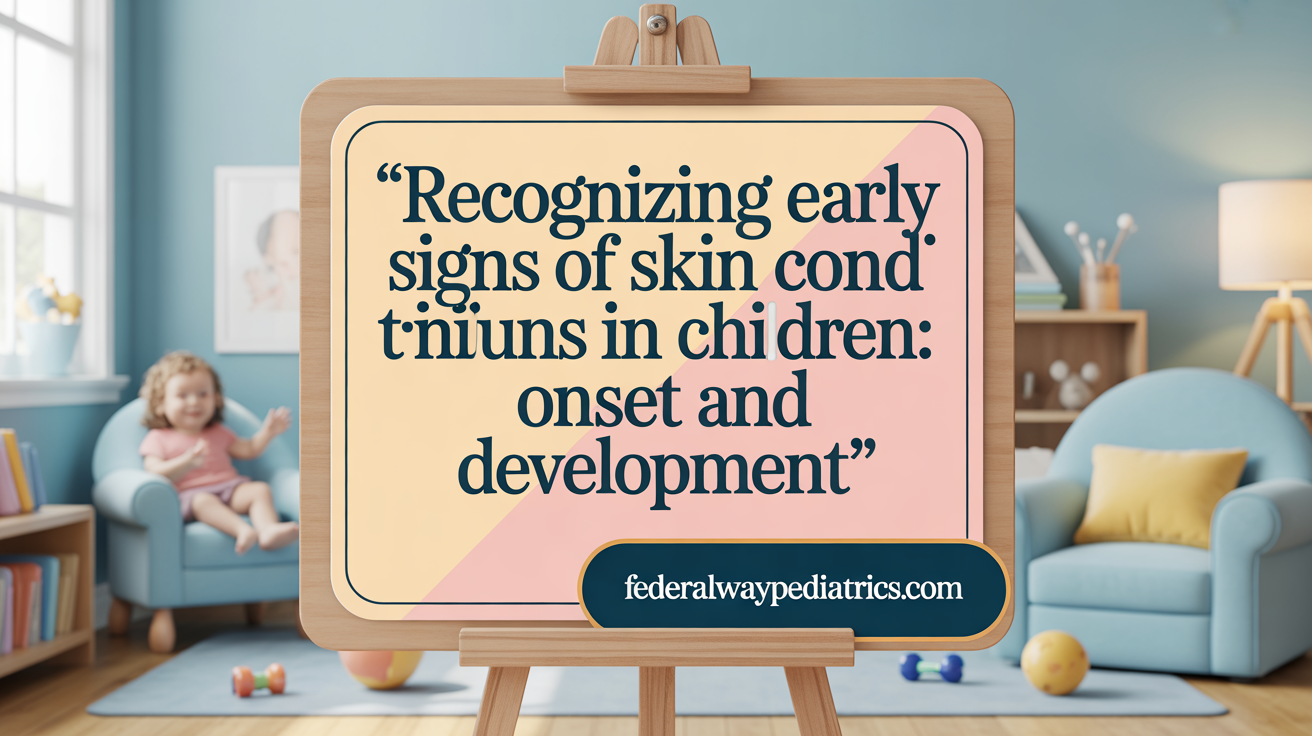
When does acne usually start in children?
Acne in children generally begins around the age when puberty sets in, with a typical onset at approximately 11 years for girls, followed by boys a few years later. This timing aligns with increased androgen levels, which stimulate sebaceous gland activity and oil production, leading to acne development.
In addition to the common adolescent onset, prepubertal acne can occur in younger children, starting as early as age 7. Studies show that the average age of onset for prepubertal acne is around 10.8 years. Although less frequent, prepubertal acne tends to be more prevalent in females, accounting for about 75% of these early cases.
Children with prepubertal acne often present with lesions similar to adult acne, involving comedones and inflammatory papules. While most cases are mild, severe prepubertal acne does happen, which can be more challenging to treat. Recognizing these early signs is crucial for timely management to prevent potential scarring and address psychological impacts.
Overall, while acne most commonly appears during early adolescence, healthcare providers should be alert to its early signs in children as young as 7, especially in girls exhibiting other pubertal changes or hormonal imbalances.
| Age Range | Typical Onset | Prevalence in Girls | Prevalence in Boys | Notes |
|---|---|---|---|---|
| 7-12 years | Early prepubertal | Higher in females (~75%) | Less common | Prepubertal acne can be severe and appears before puberty |
| 13-15 years | Adolescence | Most common age for onset | Majority of cases | Peak prevalence during teenage years |
| >16 years | Adolescent to adult | Declines with age | Continues into adulthood |
Hormonal Influences and the Link Between Acne and Adolescence
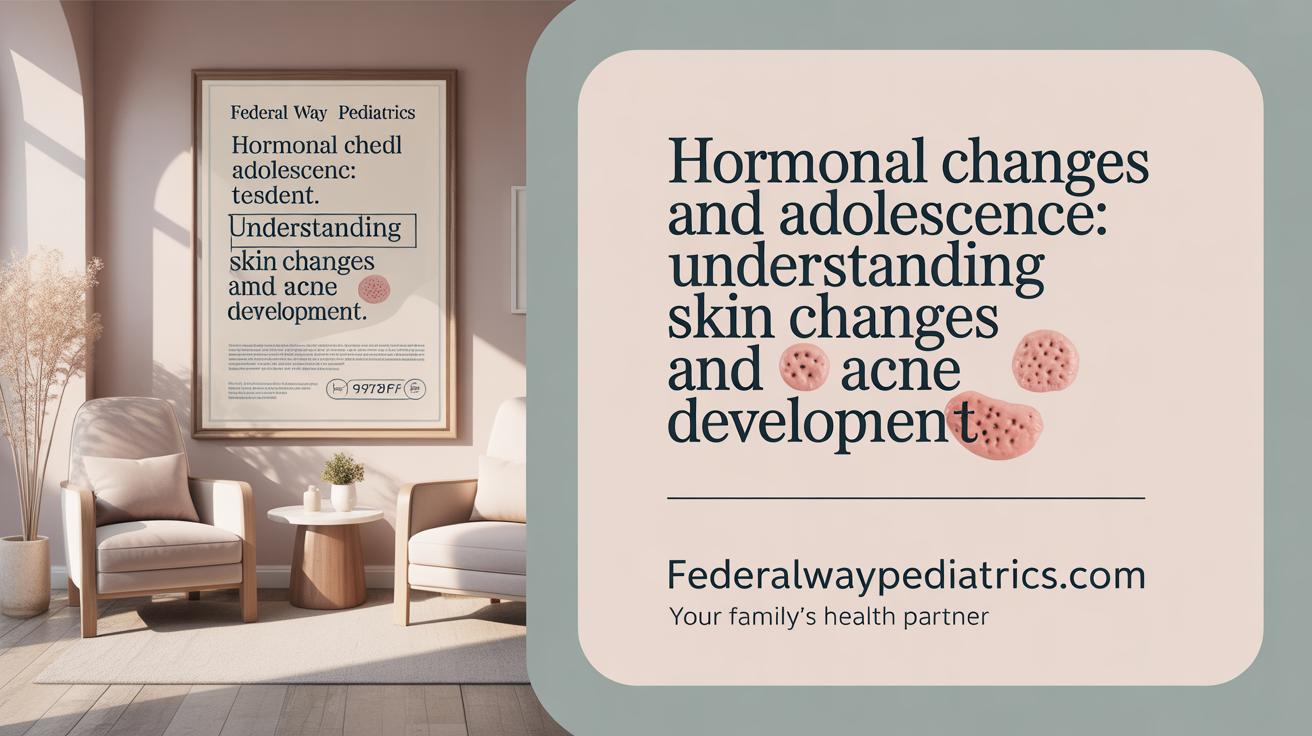
Why is acne often linked to adolescence?
Acne is closely associated with adolescence due to the hormonal fluctuations that occur during this period. Puberty triggers a surge in hormones called androgens, such as testosterone and dihydrotestosterone. These hormones stimulate the sebaceous (oil) glands in the skin, leading to increased sebum production.
The excess oil produced creates an environment conducive to pore blockage by dead skin cells and oil, which can result in the formation of pimples, blackheads, and other inflammatory lesions. This process explains why most cases of acne appear or worsen during the teenage years.
In addition to increased androgen levels, hormonal fluctuations involving progesterone and estrogen also influence oil secretion and inflammatory responses. These variations can cause cycles of flare-ups, making acne a dynamic skin condition during adolescence.
Genetics further modulate this process. Some individuals are genetically predisposed to heightened sensitivity of their sebaceous glands to hormonal signals. This sensitivity can amplify sebum production and inflammation, leading to more severe acne.
Overall, the hormonal environment during adolescence acts as the primary catalyst for increased sebaceous activity and acne development. It is the combination of hormonal surges and genetic predisposition that makes acne so prevalent and persistent in this age group.
Gender and Other Demographic Characteristics Associated with Pediatric Acne
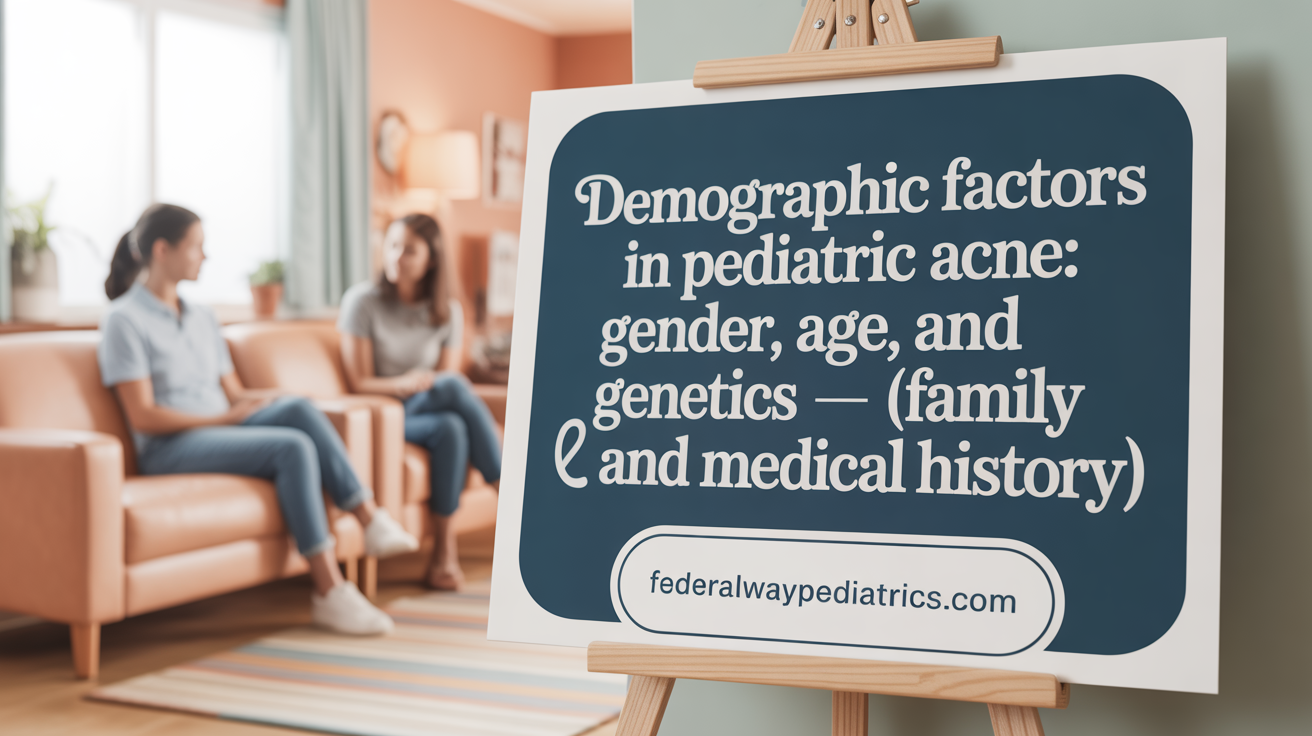
What demographic factors are associated with pediatric acne?
Pediatric acne displays notable variations based on several demographic factors, including age, gender, and pubertal status. Studies reveal that prepubertal acne is observed in about 3.5% of children with acne, with a higher prevalence in females, accounting for roughly 75% of cases. This suggests that gender influences the likelihood and presentation of acne even before puberty begins.
Age is another critical factor. The incidence rates increase with age in children, especially between ages 7 to 12. During this period, the annual incidence reaches 144.3 per 10,000 person-years in 11-12-year-olds, compared to only 4.3 in 7-8-year-olds. Acne most commonly affects children aged 12 and above, aligning with pubertal hormonal changes that stimulate sebaceous gland activity.
Hormonal influences significantly contribute to pediatric acne development. Peaks during mini-puberty and adolescence correspond with increased androgen levels, which enlarge sebaceous glands and boost oil production. These hormonal dynamics explain why acne is more intense and prevalent during puberty.
Socioeconomic and lifestyle factors also affect the occurrence and severity of pediatric acne. For example, higher consumption of milk and oily foods has been associated with more severe acne cases. Obesity, reflected by higher BMI percentiles, is also more prevalent among children with acne, possibly indicating nutritional and hormonal interactions.
Furthermore, familial history influences risk. Approximately 95% of affected children have a family history of acne, most notably from maternal lines. Factors such as a family history of acne increase the likelihood of moderate or severe forms, emphasizing a genetic predisposition.
In conclusion, demographic factors like age, gender, pubertal status, genetics, and lifestyle habits shape the presentation and severity of pediatric acne. Recognizing these influences helps tailor preventive and therapeutic strategies for affected children.
Epidemiological Patterns and Statistical Insights on Childhood Acne
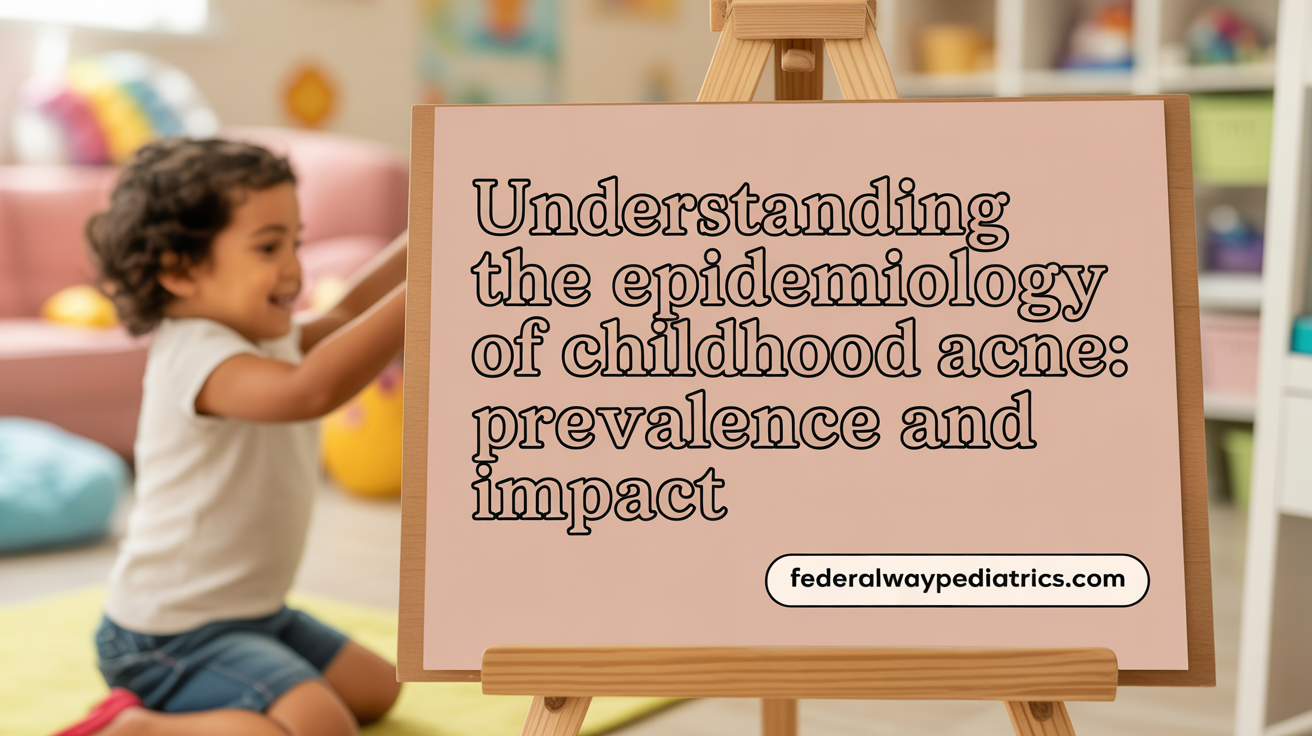
What are the epidemiological patterns and statistics of childhood acne?
Childhood acne is a common dermatological condition affecting a notable segment of the pediatric population. In various studies, prevalence rates range from about 1.8% to 4.8% among children in regions like Taiwan. Specifically, prepubertal acne, which occurs before the onset of puberty, makes up roughly 3.5% of all acne cases.
This type of acne is more prevalent among females, accounting for approximately 75% of prepubertal cases. The severity of acne in this age group tends to be moderate to severe, with severe cases (classified as GEA scale 4) representing about 33% of affected children.
Most pediatric cases exhibit inflammatory lesions, with a frequency of 95.2%. The face is the most commonly affected area, involved in nearly all cases (98.7%), followed by the back (79.2%) and chest (41.7%). These lesions are primarily papules and comedones, with some children also showing scars.
Genetics appears to play a significant role, as 95.1% of affected children report a family history of acne. This familial link indicates a hereditary predisposition, further supported by data showing higher prevalence among children with a family history, especially those with affected mothers.
Additionally, environmental factors like diet influence acne severity and treatment outcomes. Regular consumption of milk and possibly other dietary habits have been associated with increased severity and poorer responses to treatment.
| Attribute | Data | Additional Details |
|---|---|---|
| Prevalence in pediatric population | 1.8% - 4.8% (varies by region) | Ranges across different geographic studies |
| Prepubertal acne cases | 3.5% of all cases | Predominantly in females (75%) |
| Severity distribution | 33% severe (G.E.A scale 4) | Most cases are moderate to severe |
| Lesion types | Inflammatory lesions (95.2%) | Mainly papules and comedones |
| Commonly affected areas | Face (98.7%), Back (79.2%), Chest (41.7%) | Distribution across body regions only in children |
| Family history | 95.1% report positive history | Strong genetic link |
Overall, childhood acne displays distinct epidemiological features characterized by age-specific prevalence, severity, and familial influences, emphasizing the importance of early recognition and family history assessment for effective management.
Comparative Analysis of Acne Prevalence Across Populations and Regions
How do acne rates vary between ethnic groups?
Research indicates that the prevalence of acne differs significantly across ethnic groups. For example, in Chinese populations, the prevalence reaches up to 46.8% among 19-year-olds, which is lower compared to Caucasian populations where rates can be higher. Several factors, including genetics, skin type, and cultural habits, influence these differences.
What are the age-related prevalence trends around the world?
Globally, acne primarily affects adolescents, with prevalence peaking in late teens. According to studies, around 85% of teenagers develop acne at some point. The incidence increases sharply with age, hitting the highest point in teenagers aged 15-19 years, with rates reaching up to 38%. In childhood, the occurrence is less common; most cases are seen after age 10, with very few under age 10. The prevalence then declines in adults over 50.
Are there regional differences in how early acne appears and how severe it becomes?
Yes, regional variations exist. In some Asian countries like China, acne tends to start earlier in females—around age 10—and is less severe overall. In contrast, Western countries report a broader range of severity, with a higher proportion of moderate to severe acne in adolescents. Additionally, severe cases are more common in regions with higher obesity rates, such as parts of the US and Europe.
Below is a summary table comparing key prevalence aspects:
| Population/Region | Age Range | Prevalence Rate (%) | Typical Severity | Notable Factors |
|---|---|---|---|---|
| Chinese adolescents | 10-19 years | up to 46.8% at age 19 | Mostly mild | Lower severity, earlier onset |
| Caucasian adolescents | 10-19 years | Up to 85% of teens | Mild to severe | Higher severity, later onset |
| General children | 7-12 years | 3.5% of cases in study | Mild (most cases) | Often comedones, early stage |
| Regional differences | varies | Varies widely | Varies | Influenced by genetics, environment |
Understanding these variations helps clinicians tailor prevention and treatment strategies suitable for each population's characteristics.
Role of Body Mass Index and Obesity in Pediatric Acne Severity

Is there a correlation between higher BMI and acne prevalence in children?
Recent studies have shown a notable link between elevated BMI and the presence of acne in pediatric populations. Children with a BMI at or above the 95th percentile were found to have a higher occurrence of acne compared to their peers with lower BMI values. Specifically, about 16.7% of children with acne had a BMI in this higher range, versus 12.2% of children without acne, suggesting that obesity may contribute to the development of acne.
Furthermore, children with acne tend to have a higher median BMI percentile (75.0) than those without the condition (65.0). This positive association indicates that as BMI increases, so does the likelihood of experiencing acne. Higher BMI is also correlated with increased odds of requiring systemic medications for acne, reflecting potentially more severe cases.
How does BMI act as a risk factor for severe acne and systemic treatment?
The relationship between BMI and acne severity extends beyond prevalence. Increased BMI has been linked to more severe forms of acne, with data showing that the odds of needing systemic treatment rise as BMI rises. Specifically, for every 5 kg/m2 increase in BMI, there's a 43% increase in the likelihood of systemic medication use. This suggests that obesity not only influences the appearance of acne but may also complicate its management.
The mechanisms behind this include hormonal imbalances associated with higher adiposity, such as increased insulin and androgen levels, which may stimulate sebaceous gland activity and inflammation.
In what ways does obesity impact acne treatment outcomes?
Obese children tend to have more resistant and severe acne, leading to longer and more complex treatment courses. Their higher BMI and associated metabolic factors can diminish the effectiveness of conventional acne therapies. Additionally, systemic treatment options might carry increased risks or side effects in this group.
Therefore, addressing obesity as part of acne management could improve treatment response. Lifestyle interventions—like weight control, healthy diet, and physical activity—may be important adjuncts to medical therapy, potentially reducing severity and facilitating better outcomes.
| Aspect | Observation | Implication |
|---|---|---|
| Prevalence | Higher in children with BMI ≥95th percentile | Obesity linked to increased acne risk |
| Severity | Increased BMI correlates with more severe acne | Obesity may exacerbate acne severity |
| Treatment | Greater BMI associates with higher systemic medication use | Obese children may require more aggressive treatment |
Understanding the influence of BMI and obesity provides valuable insights for customizing pediatric acne management, emphasizing the importance of weight management alongside dermatological treatment.
Clinical Features and Lesion Types in Pediatric Acne
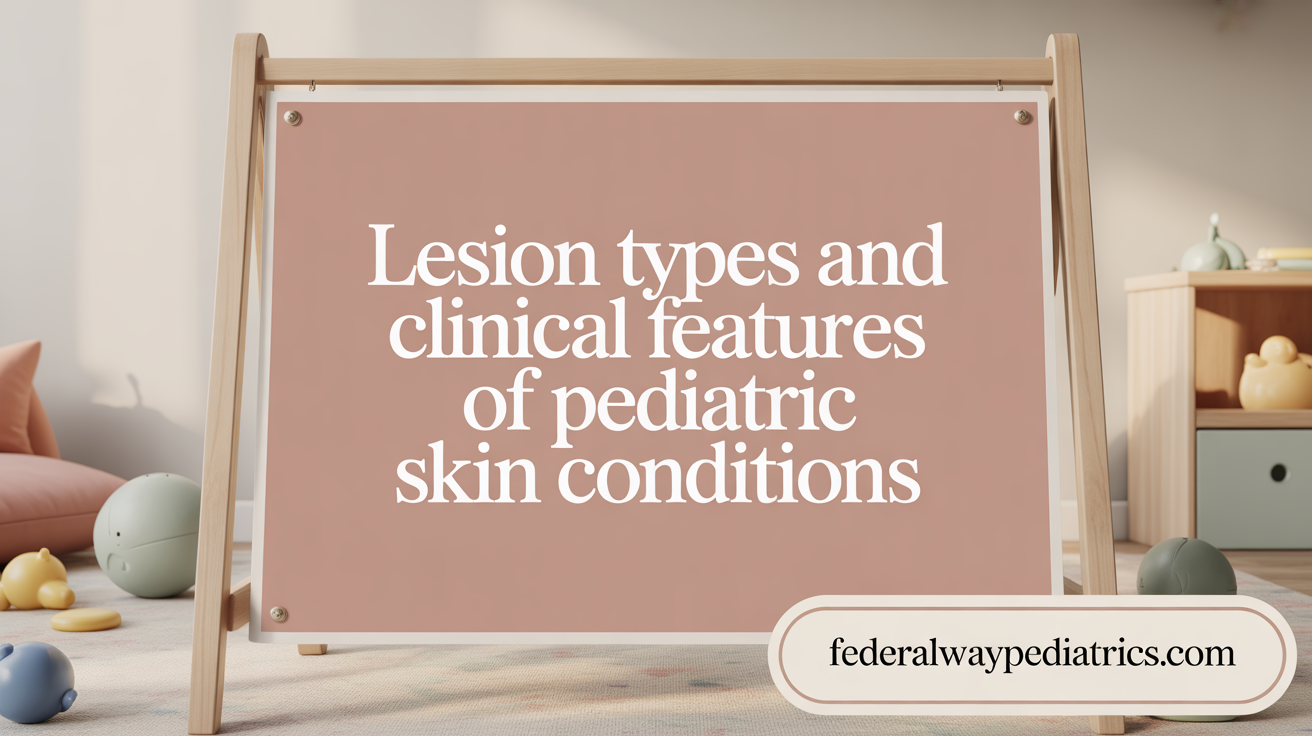
What are the most common lesion types in children with acne?
In pediatric cases, the most frequently observed lesions are comedones and papules. Comedones, which include blackheads and whiteheads, are present in about 98% of cases, making them the earliest sign of acne in children. Papules, raised red bumps caused by inflammation, are seen in approximately 94% of affected children.
How does lesion distribution vary by age?
Lesion distribution tends to change as children grow older. Children aged 8 to 12 years typically develop more comedones and fewer pustules compared to younger children aged 1 to 7 years. The face is the most commonly affected area, with nearly all cases (98.7%) presenting lesions there. Additional areas impacted include the back (79.2%) and the chest (41.7%).
What is the severity of pediatric acne?
Most pediatric acne cases are mild, accounting for about 81.9% of cases, predominantly presenting with comedones and papules. Severe forms, characterized by more extensive lesions, are rarely seen below the age of 12. The grading of acne severity often relies on classification systems such as the GEA scale, with grade 1 being the mildest and grade 4 indicating severe acne.
Specific lesion stages and their significance
In early childhood, comedones and papules are the primary lesion types, indicating initial stages of acne development. As children age, lesions may become more inflammatory, with an increased number of inflammatory papules and pustules. The presence of scars in some cases (around 14%) reflects the potential for long-term skin damage if acne is severe or untreated.
Exploring these lesion characteristics provides insight into the progression and management of acne in children, emphasizing the importance of early diagnosis and tailored treatment approaches.
Psychosocial Impact and Quality of Life Considerations in Childhood Acne
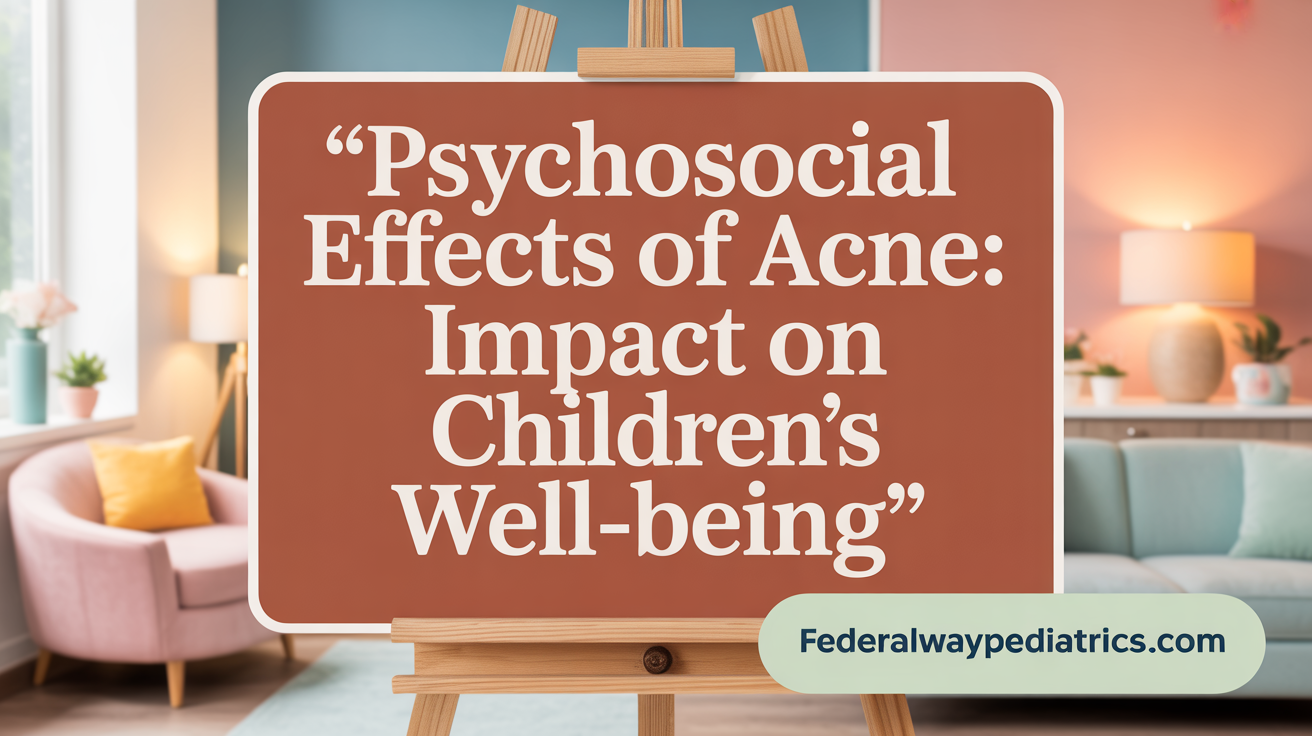
Emotional and psychological toll of acne
Childhood and adolescent acne can significantly affect a young person's mental health. Many children report feelings of embarrassment, lowered self-esteem, and social withdrawal due to their skin condition. The visibility of acne on the face and other exposed areas often leads to teasing or bullying, which can result in anxiety and depression.
Quality of life impairment related to acne severity
Research indicates that the impact on quality of life correlates closely with acne severity. Children with moderate to severe cases experience a greater decline in self-confidence and social interactions. In some studies, up to 29% of affected children reported that acne negatively affected their daily lives, with this number increasing with more severe disease.
Importance of addressing mental health in pediatric acne patients
Given these substantial emotional effects, it is vital for healthcare providers to recognize and address mental health issues alongside physical treatment. Providing psychological support and counseling can help mitigate long-term emotional distress. Early intervention not only improves skin outcomes but also promotes healthier psychological development, helping children maintain a positive self-image and better social integration.
Antibiotic Resistance and Microbial Factors in Pediatric Acne
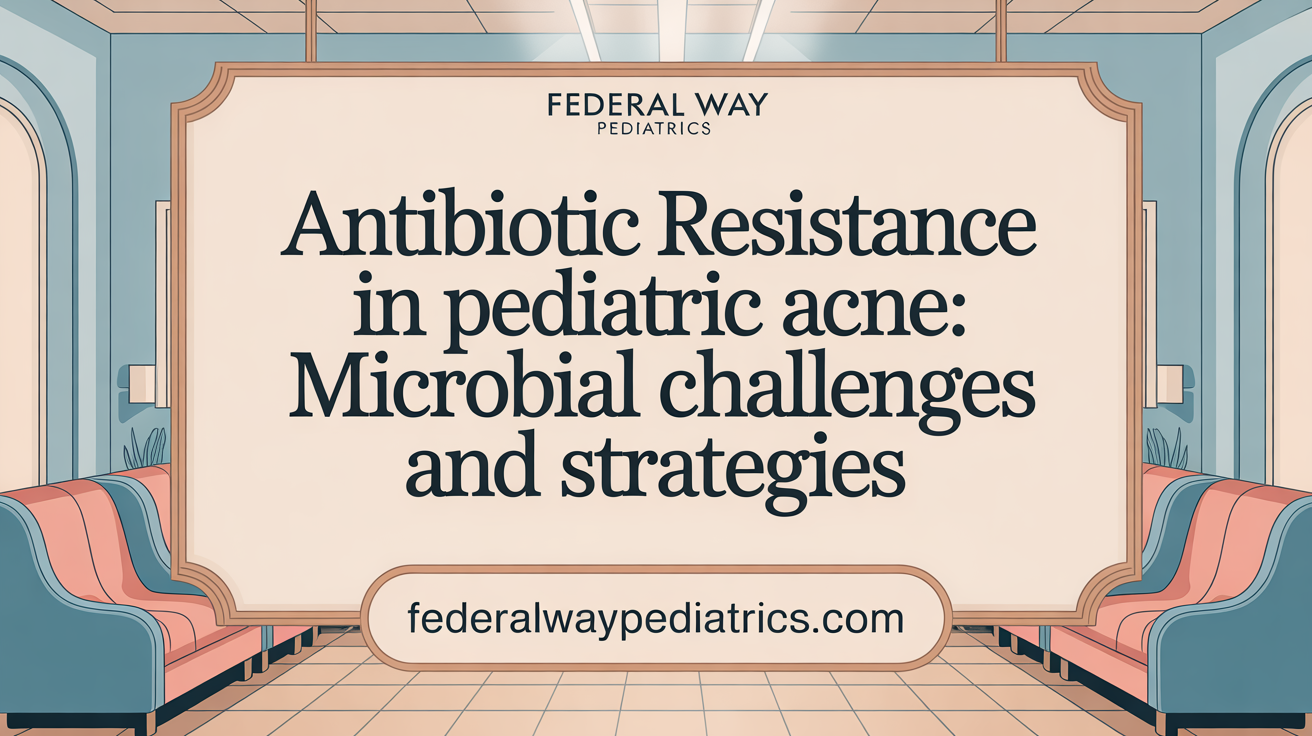
Prevalence of Cutibacterium acnes phylotypes
Research into the microbial environment of pediatric acne has identified a high prevalence of the Cutibacterium acnes phylotype IA1, particularly belonging to the clonal complex 18. This strain is commonly associated with acne lesions and plays a significant role in the disease's pathogenesis. The dominance of this phylotype suggests that targeted microbial management could be beneficial in treating pediatric acne.
Antibiotic resistance trends in pediatric acne
A concerning trend has emerged regarding antibiotic resistance in C. acnes strains isolated from children with acne. Specifically, over half of these strains (57.1%) exhibit resistance to macrolide antibiotics, which are traditionally commonly used for acne treatment. This resistance complicates therapy options and raises the need for alternative strategies.
Implications for treatment choices
The high rate of antibiotic resistance emphasizes the importance of cautious antibiotic use and the consideration of other treatment modalities. Clinicians are encouraged to perform microbial testing when possible and combine therapies to mitigate resistance development. Future treatment approaches may increasingly rely on advanced antimicrobial agents or non-antibiotic options to effectively manage pediatric acne without exacerbating resistance issues.
| Aspect | Data | Additional Details |
|---|---|---|
| Predominant C. acnes lineage | Phylotype IA1, CC18 | Significant in acne pathogenesis |
| Antibiotic resistance rate | 57.1% resistant to macrolides | Influences choice of antimicrobial therapy |
| Treatment implications | Need for alternative strategies | Includes microbial testing and non-antibiotic therapies |
Guidelines and Evidence-Based Treatments for Pediatric and Preadolescent Acne
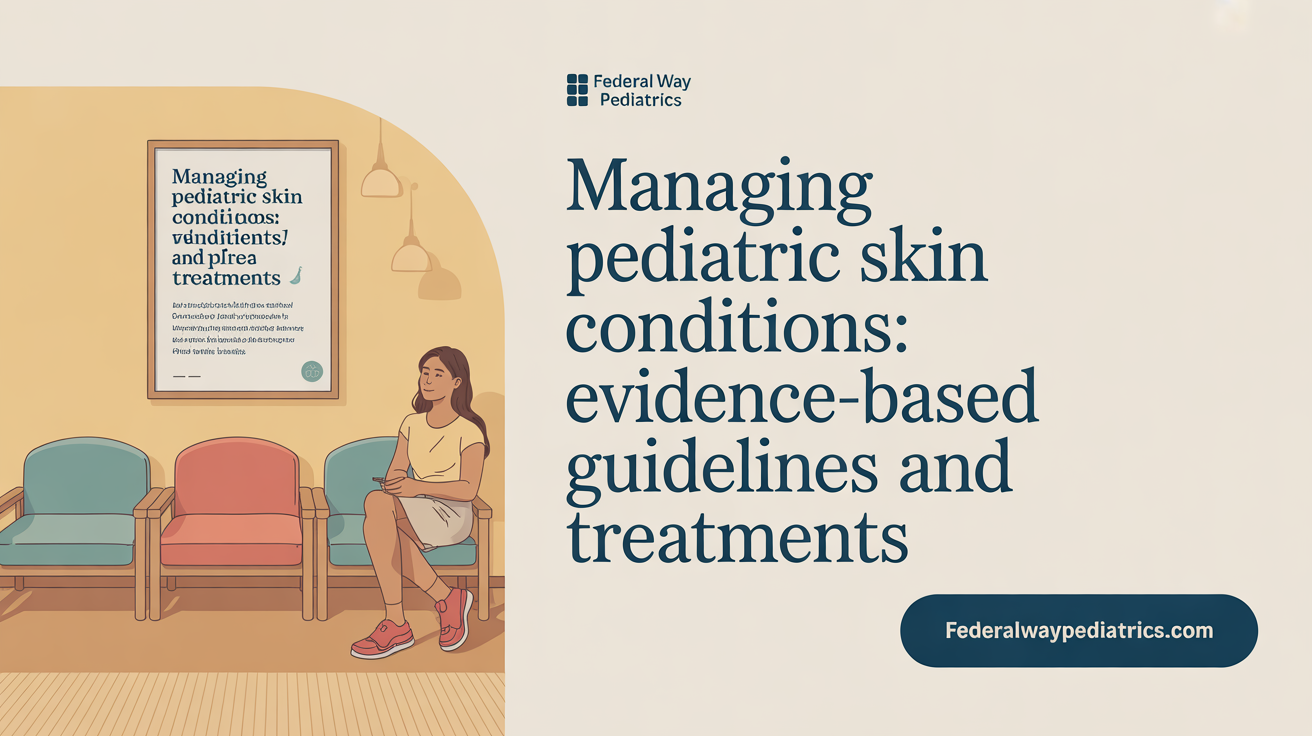 Are there guidelines or recommended treatments for pediatric and preadolescent acne?
Are there guidelines or recommended treatments for pediatric and preadolescent acne?
Yes, established guidelines exist to guide the management of acne in children and preadolescents. These recommendations are supported by organizations such as the American Academy of Pediatrics and are based on current evidence to ensure safe and effective care.
Treatment strategies are tailored according to the severity of acne and the age of the patient. Most early cases, which often present with comedones and papules, can be managed with topical therapies. These include benzoyl peroxide, topical retinoids, and topical antibiotics, which are effective for mild to moderate acne. Severe cases, such as those involving extensive inflammatory lesions, may require systemic treatments like oral antibiotics, hormonal therapies (such as oral contraceptives and spironolactone), or isotretinoin.
The guidelines emphasize the importance of selecting treatments that minimize side effects and prevent the development of bacterial resistance. For example, using benzoyl peroxide alongside antibiotics can reduce resistance, while careful monitoring is necessary when prescribing systemic medications.
Strategies to reduce side effects include applying topical agents correctly, using non-comedogenic skincare, and addressing potential psychosocial impacts of acne. The guidelines also recommend psychological support and counseling when needed, considering the significant emotional and quality of life effects in young patients.
Clinicians are encouraged to follow management algorithms that assess severity, comorbidities, and patient preferences. This personalized approach improves outcomes and enhances adherence, leading to better control of acne and its psychological effects.
In summary, evidence-based guidelines recommend a stepwise management plan that balances efficacy with safety, tailored specifically for pediatric and preadolescent patients to achieve skin clearance and support mental well-being.
Conclusion: Charting the Path Forward in Pediatric Acne Management
Acne in children is a complex and multifaceted condition characterized by variable prevalence across age groups, notable gender differences, and significant psychosocial consequences. Epidemiological data underscores the importance of recognizing prepubertal acne as a distinct clinical entity, with a higher prevalence among females and familial predispositions playing a strong role. The interplay between hormonal changes, body mass index, and environmental factors contributes to the onset and severity of acne in the pediatric population. Importantly, antibiotic resistance and microbial profiles add layers of complexity to treatment strategies. Evidence-based clinical guidelines offer a foundation for managing pediatric acne effectively, emphasizing tailored approaches that address both physical symptoms and mental well-being. With continuing research and heightened awareness, pediatric care providers can better identify, treat, and support children affected by acne, ultimately improving outcomes and quality of life.
References
- Prepubertal acne: A retrospective study - PMC
- Acne incidence in preadolescents and association with increased ...
- Acne in the Pediatric Population: Prevalence, Emotional Toll, and ...
- Epidemiological patterns of acne vulgaris among adolescents in North
- Prevalence, Severity, and Severity Risk Factors of Acne in High ...
- An Observational Study of Clinical, Metabolic and Hormonal... - LWW
- Systematic review of the epidemiology of acne vulgaris - Nature
- Study Reveals Age, Gender Differences in Acne Prevalence Among ...
- Acne Vulgaris in the Pediatric Patient - AAP Publications
- Prevalence of Acne Vulgaris in Chinese Adolescents and Adults
